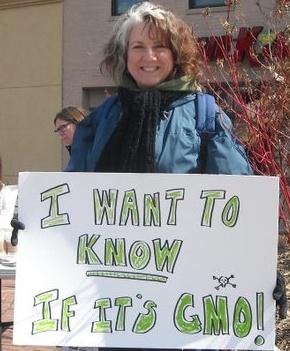
Vermont will soon be the first state in the nation to require labels on genetically modified (GMO) foods. Its GMO-labeling law, the first passed in the nation, goes into effect on July 1. Maine and Connecticut have since passed their own GMO-labeling laws. But they won’t go into effect until neighboring states pass similar legislation.
What exactly does Vermont’s law do? It requires that food manufacturers “label many products containing GMOs that are sold in Vermont,” the Burlington Free Press reported when it passed in 2014. Certain food products are exempt, including meat, dairy and liquor. The label can be worded three ways: “partially produced with genetic engineering," “may be produced with genetic engineering,” or “produced with genetic engineering.”
Despite scare tactics and brand crowing, stores appear to be in compliance. A representative from a Hannaford chain location in Burlington, VT confirmed to TriplePundit by phone that they've been gearing up for the transition for several weeks and all the major brands are in compliance. New product packaging will roll out tomorrow as planned.
The law defines genetic engineering in several ways, stating that is a “process by which a food is produced from an organism or organisms in which the genetic material has been changed” through several applications. You can learn more about these applications in the bill here.
That is all a bit confusing, so let’s look at the most common GMO crops: soy, corn and cotton. They are genetically engineered with what the U.S. Department of Agriculture (USDA) calls “pest management traits.” Such technologies first became commercially available for major crops in 1996. Now, their adoption in the U.S. is widespread. The two most common types of GMO crops are herbicide tolerant (HT) and insecticide resistant (called Bt) varieties. The traits of HT crops allow them to tolerate certain herbicides, including glyphosate, the most widely used herbicide in the world. Bt crops have traits that allow them to tolerate certain insecticides.
In 2013, American farmers used HT soybeans on 93 percent of all soybean acreage, according to USDA data. HT corn accounted for 85 percent of corn acreage, and HT cotton accounted for 82 percent of cotton acreage the same year. Bt cotton made up 75 percent of cotton crops, and Bt corn accounted for 76 percent of corn crops in 2013. During a 16-year period (1996 to 2011) in which HT crops increased, herbicide use also increased, a 2012 study found. HT crops coincided with a 527 million pound increase in herbicide use in the U.S. during the 16-year period studied.
And glyphosate, the main ingredient in Roundup, continues to lead the pack. In the spring of 2015, the International Agency for Research on Cancer (IARC), the cancer agency of the World Health Organization, labeled glyphosate “probably carcinogenic” to humans. The IARC found “convincing evidence that glyphosate can cause cancer” in laboratory animals. Back in 1985, the U.S. Environmental Protection Agency (EPA) classified glyphosate a possibly carcinogenic, but re-evaluated the herbicide’s status in 1991 and changed its classification to evidence of non-carcinogenicity.
In September 2015, the California Environmental Protection Agency’s Office of Environmental Health Hazard Assessment (OEHHA) announced its intention to list glyphosate as a substance known to cause cancer under the Safe Drinking Water and Toxic Enforcement Act of 1986 (Proposition 65). This spring, Monsanto filed a petition for writ of mandate in California Superior Court in Fresno in an attempt to block the listing.
Attempts to stop Vermont’s GMO-labeling law
U.S. congressional members have tried repeatedly to stop Vermont’s law from taking effect. The latest attempt happened last week when two members of the Senate Committee on Agriculture, Nutrition, and Forestry came up with a bill to halt the Vermont law. Consumerist called the two senators, Pat Roberts (Kan.) and Debbie Stabenow (Mich.), the “most powerful members” of the Committee. Both have also received sizable contributions from agribusiness PACs and donors.
Their bill seeks to amend the Agricultural Marketing Act of 1946 to require the Secretary of Agriculture to create a “national disclosure standard for bioengineered foods.” If passed, the bill would prevent any states from enacting GMO-labeling laws and would negate Vermont’s law.
Poll after poll shows that Americans favor labeling GMO foods. A November 2015 poll by the Mellman Group found that 89 percent of those surveyed said they favor mandatory labels on “foods which have been genetically engineered or containing genetically engineered ingredients be labeled to indicate that.” A Consumer Reports poll in June 2014 found that 92 percent said they believe GMO foods should be labeled.
Photo: Flickr/Alexis Baden-Mayer
Jennifer Boynton contributed reporting to this article.

Gina-Marie is a freelance writer and journalist armed with a degree in journalism, and a passion for social justice, including the environment and sustainability. She writes for various websites, and has made the 75+ Environmentalists to Follow list by Mashable.com.














